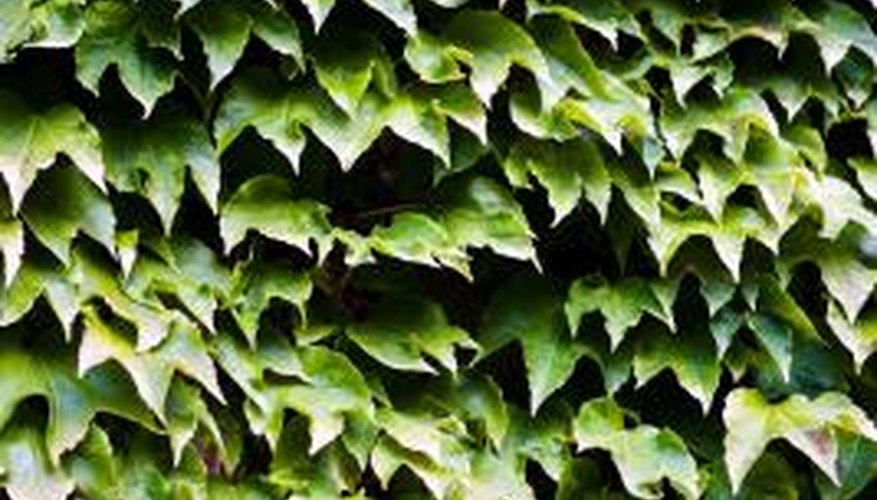While there are over 25 different species of ivy plants in the United States, English ivy is the most popular. This plant is used in a variety of ways including as a groundcover, on walls or buildings, or trailing out of containers. Ivies are generally healthy, but are susceptible to insect infestations which can damage the health and vigour of the plant.
Types
Mealybugs are common pests of ivy both grown at home or in the nursery. These sucking insects are most active during dry, warm periods and feed on plants with their sucking mouthparts. Mealybugs are covered in a white waxy coating that resembles finely ground meal, which is where the insect received its name. Mealybugs are usually found at the base of plants and begin crawling on plant leaves and flowers as their numbers increase. Another common ivy pest are broad mites. These tiny pests measure 0.2mm in length and are oval in shape. Broad mites are yellow, light brown or green in colour and have three pairs of legs. Although they are very small, broad mites are serious and damaging pests with a wide host range.
- Mealybugs are common pests of ivy both grown at home or in the nursery.
- Mealybugs are usually found at the base of plants and begin crawling on plant leaves and flowers as their numbers increase.
Effects
Ivy suffering from infestations of mealybugs often develop stippling of leaves from feeding, and leaves may become distorted. Mealybugs remove plant sap from ivy leaves with their sharp mouthparts, causing them to excrete a sticky liquid known as honeydew. The excretion of honeydew causes sooty mould fungi to adhere to the ivy plant, which results in a coating of black fungus. Sooty mould often covers the entire plant and is unattractive when severe. Broad mites cause ivy to develop distorted flower stems, buds and leaves. Infested leaves may turn downward, and growth of the plant becomes stunted. Broad mites excrete a toxic substance in their saliva which causes new growth to be malformed. They are usually found feeding on new leaves, which they prefer.
- Ivy suffering from infestations of mealybugs often develop stippling of leaves from feeding, and leaves may become distorted.
- The excretion of honeydew causes sooty mould fungi to adhere to the ivy plant, which results in a coating of black fungus.
Cultural Control
Mealybugs are often difficult to control. Light infestations of mealybugs can be eliminated by placing an alcohol-soaked cotton ball on the insect's backs and removing them by hand from your ivy plant. Mealybugs and broad mites may be eliminated by spraying your ivy with a forceful jet of water from the garden hose or shower nozzle. This process knocks insects from your plant, reducing their numbers; the treatment must be repeated twice each week for continued control.
- Mealybugs are often difficult to control.
- Light infestations of mealybugs can be eliminated by placing an alcohol-soaked cotton ball on the insect's backs and removing them by hand from your ivy plant.
Chemical Control
Heavy infestations of mealybugs and broad mites require chemical control methods. Applying insecticidal soaps and horticultural oils to your ivy is less toxic than chemical insecticides and usually eliminates the pests. These products work on contact to kill insects, so be sure to apply them thoroughly. Concentrate on the undersides of plant leaves and new leaves where insects gather to feed. Miticides are available for broad mite control. These products may help control mites when applied thoroughly. Be sure to treat all plants in close proximity to your infested ivy, as mealybugs and mites multiply rapidly.
- Heavy infestations of mealybugs and broad mites require chemical control methods.
- These products work on contact to kill insects, so be sure to apply them thoroughly.
